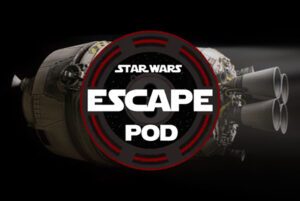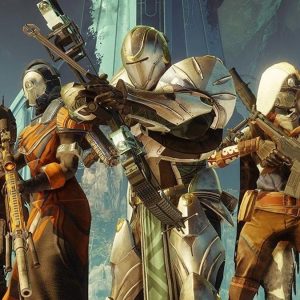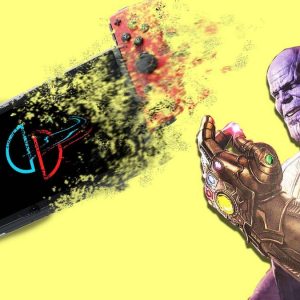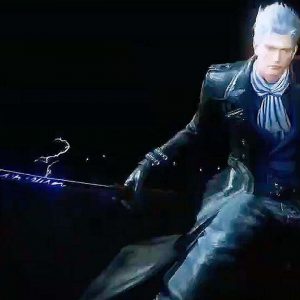[ad_1]
A look back at one of Mario’s most bizarre adventures.
Every year dozens of classic video games celebrate milestone anniversaries. There always seem to be a few major releases highlighted above the rest, but last year may have been the biggest yet for Nintendo fans. 2018 saw the 30th anniversary of Super Mario Bros. 3, the 25th anniversary of Star Fox, and the 20th anniversary of The Legend of Zelda: Ocarina of Time, just to name a few.
But it’s important to remember more than just the best-selling classics. Sometimes it’s the weird games, the ones the general gaming public have forgotten, that deserve some recognition. This is the brief history of one such game, a unique shooter that celebrated its 25th anniversary last fall to little fanfare — Yoshi’s Safari.

Gunning Down the Competition
By the end of 1991 Nintendo had known for some time that the Sega Genesis would be a thorn in the side of its new home console, the Super NES. While the gaming giant was determined to keep its family friendly image, it also knew it had to compete with the “cool factor” featured in Sega’s games and advertising. The Super Nintendo needed an edge to overtake this rebellious new rival and their speedy blue mascot.
Nintendo had seen varied success with its NES peripherals over the years, but its most iconic add-on was undoubtedly the 1985 duck-blasting light gun, the NES Zapper. It was likely this past success, coupled with the pressure to out do Sega, that inspired the Super Scope — a wireless, shoulder-mounted miniature bazooka that worked exclusively with the Super NES.

Released in February of 1992 to moderate consumer interest, the Super Scope came bundled with a wired transmitter and a cartridge featuring six compatible minigames. “You’re looking at the next breakthrough for the Super Nintendo,” a booming voice declared in the Super Scope’s introductory commercial. With a retail price of $59.99 (roughly $110 today) and few compatible games, the Super Scope wasn’t quite the “breakthrough” or overnight success that Nintendo had hoped for.
“
The bizarre first-person rail shooter would ultimately signify the beginning of the end for the Super Scope.”
A year later, little had changed in the battle between the Super Nintendo and the Sega Genesis. The Super Scope’s meager sales in the west had led to a limited release in Japan, where the light gun was being used to promote the ill-fated Super Mario Bros movie. Nintendo knew that the peripheral’s popularity was hanging on by a thread. Thus the company commissioned its famous R&D1 department to develop a Super Scope compatible game starring everyone’s favorite pudgy plumber. This was the Super Scope’s last chance at mainstream success.
The North American release of this new Mario-centric shooter fell during a highly controversial moment in gaming history. In September of 1993, the arcade phenomenon Mortal Kombat was set to be released for both Nintendo and Sega’s 16-bit consoles. Nintendo, fearing parental backlash, demanded the game be stripped of its trademark blood and gore for release on its system. A controversial move that took the spotlight off of Nintendo’s newest game, Yoshi’s Safari. The bizarre first-person rail shooter would ultimately signify the beginning of the end for the Super Scope.
Ready, Aim, Fire Flower
While Yoshi’s Safari, known in Japan as Yoshi’s Road Hunting, was a certified flop, it’s still an entry in the Mario series worth revisiting. For starters, though the title would suggest it should star Nintendo’s goomba-munching dinosaur, you took on the role of Mario riding Yoshi in a first-person view. The fact that Yoshi’s Safari is, technically, a first-person Mario game is enough to make it stand out, but it’s Mario weapon of choice that truly cements its strange legacy. Mario, just as those standing in front of their TV screen, wielded a gun. A toy gun with purple buttons, but a gun nonetheless.

Yoshi’s Safari also represents a few other firsts in the Mario universe. To begin with, it takes place in Jewelry Land, a location similar to the Mushroom Kingdom in both terrain and inhabitants that has never made a second appearance. Secondly, its story centers on Princess Peach, calling upon Mario and Yoshi to save the kidnapped rulers of Jewelry Land – King Fret and Prince Pine – from none other than the devious Bowser. And while the Jewelry Land royalty may have some scratching their head, it’s actually the name “Princess Peach” that’s significant. Yoshi’s Safari represents the first time that the now famous name was used in a western Mario game. All prior games referred to her as Princess Toadstool. It would be 1996’s Super Mario 64 that would bring this moniker to a wider audience.
“
Yoshi’s Safari paved the way for some of the series’ more experimental games.”
Looking at gameplay, Yoshi’s Safari felt more like an arcade experience. The 12 available stages weren’t terribly long or difficult, but offered players a running leaderboard to help them keep track of their best scores and promote multiple playthroughs. The ever-changing visuals involved in each stage were a product of the Super NES’s Mode 7 capabilities, a technique used in games like F-Zero and Super Metroid to rotate or stretch the pixelated background.

When it came to baddies, Yoshi’s Safari didn’t stray too far from the normal hordes of goombas, koopas, and cheep-cheeps, but it was its larger-than-life bosses that truly made it stand out from the usual Mario throwdown. The Koopalings, fresh off their defeat in Super Mario World, could be found at the end of early stages, each behind the controls of their own personalized mech. Rocket fists flew and laser cannon blasted, as players did their best to rattle off shots into the weak spots of each armored menace. Past Mario games had exuded a fantasy feel, but Yoshi’s Safari brought the series to a new sci-fi realm, guns blazing.
The combination of all these quirky aspects, coupled with its upbeat music and unusual controller, really show just how different Yoshi Safari was at the time, and remains to this day. It also paved the way for some of the series’ more experimental games of recent years: it’s hard to imagine Mario + Rabbids Kingdom Battle existing without it. Yoshi’s Safari, while far from perfect, was still ahead of its time in certain regards.
Even through Nintendo’s many years of Virtual Console support for handheld and home consoles, however, it has never seen a rerelease. It’s a shame considering how entertaining and unique the game remains, even 25 years later. The Super Scope lives on in series like Super Smash Bros and WarioWare, but the first of Mario and Yoshi’s run n’ gun outings may have sadly been their last.
Ben is a freelance writer hailing from Indianapolis. He is the host of the gaming history podcast Challenger Approaching and can be found on Twitter @SuperBentendo.
[ad_2]
Source link
























